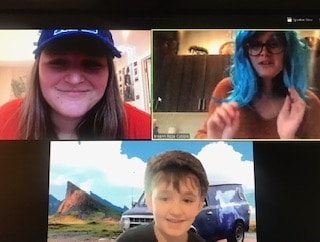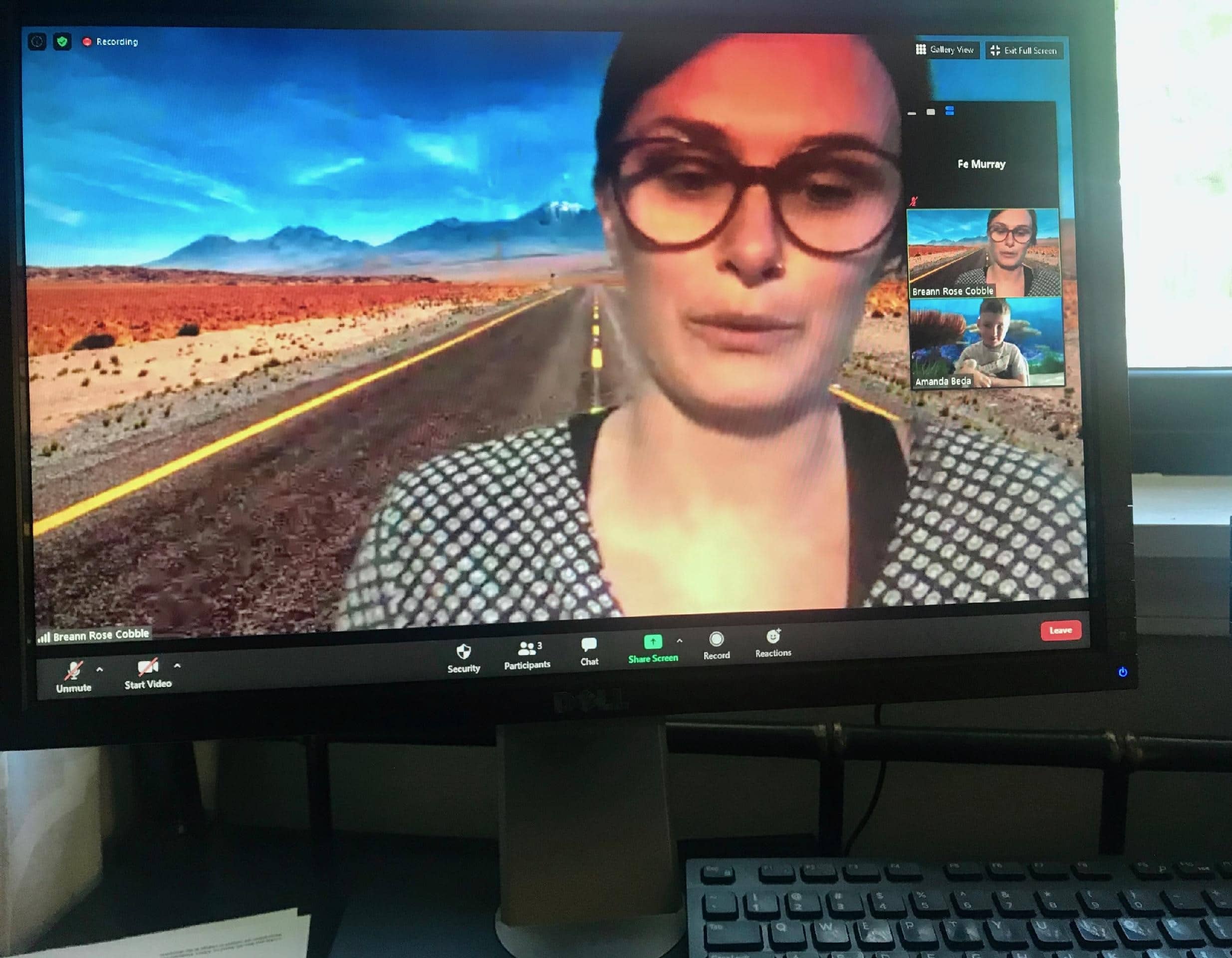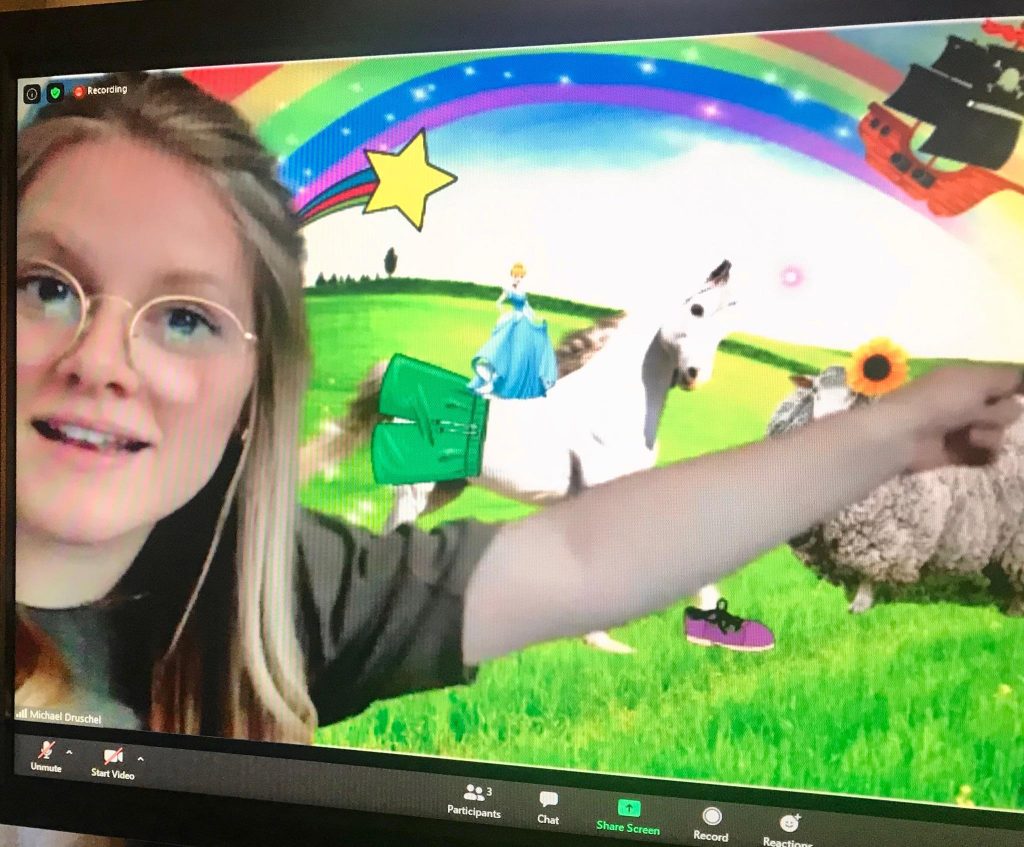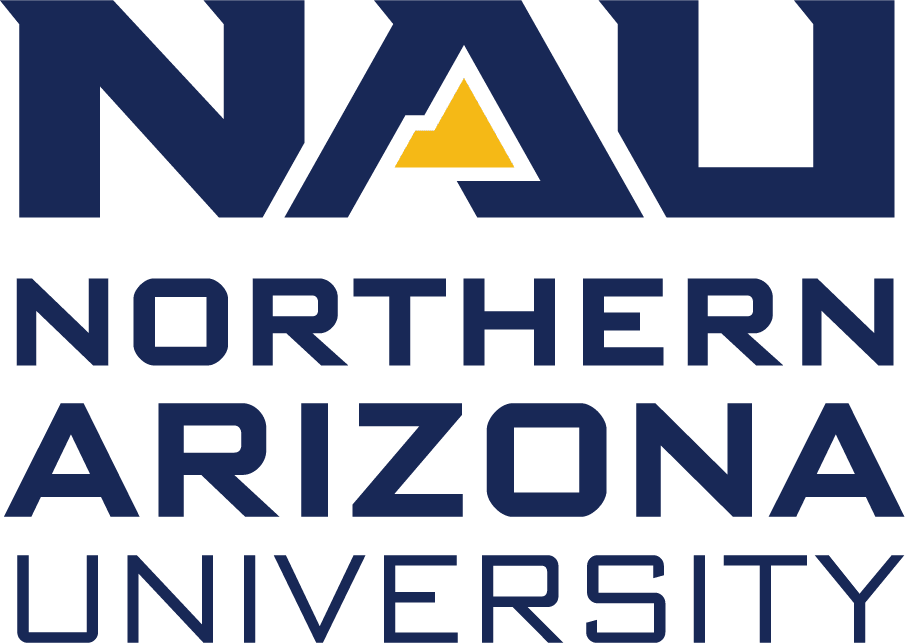Now, more than ever, organizations and health services are developing innovative ways to deliver care and stay connected to their clients during the COVID-19 pandemic. In the week following Northern Arizona University’s spring break, the NAU Speech-Language-Hearing Clinic (SLHC) shifted all of their services to a virtual format and currently remain fully functional in the services they provide to clients.
The NAU SLHC provides speech-language and hearing services, including voice evaluation treatment, cognitive-communication retraining, audiological evaluation and hearing aid dispensing to community members and students of all ages, newborn through geriatric. The mission of the clinic is to improve quality of life for adults and children with disabilities that negatively impact communication and participation in their communities. Additionally, the clinic provides clinical training for graduate students in the NAU Department of Communication Sciences and Disorders (CSD) and strives to instill a passion in students to provide meaningful professional service to local communities of Flagstaff and its surrounding areas.
Academic and clinical CSD faculty teach both in the classroom and supervise in the clinic, creating numerous opportunities for students to apply classroom knowledge in a real-world case.
“Students learn experientially, which solidifies and expands the knowledge obtained in the classroom setting,” said Kimberly Farinella, clinic director and professor in CSD. “Students also have the opportunity to see their professors practice what they preach. Clients receive the highest-quality evidence-based practice from professors who oversee the plan of care since each CSD faculty specializes in a particular area, conducts and publishes research in their area of expertise, teaches coursework and then supervises clients who fall under their area of expertise.”

“Providing services to clients via telepractice, and supervising remotely was not new to us,” Farinella said. “Switching 100 percent to telepractice sessions was, and is, difficult for students and clients alike.”
Farinella has been the director of the clinic since July 2010 and oversees all administrative aspects managing staff, patient intake, budgeting and coordinating graduate student placements. She also teaches both undergraduate and graduate level coursework and provides guidance to students.
Transitioning to a complete virtual format required students to adapt and adjust their hybrid treatment approaches. Currently, all students are undergoing an intensive competency-based telepractice training—a 12-hour training program over multiple days via Zoom led by leading speech-language pathology experts.
“Anything suddenly thrust upon a student for reasons out of their control is often not ideal,” Farinella said. “The 12-hour Telepractice Competency Training is definitely improving students’ feelings about obtaining direct clinical contact hours in an online-only fashion. The idea that students are going to gain something special as a result of a less than ideal situation has been helpful.”
Students are developing digital therapy materials to motivate clients and increase success during each treatment session. Many of these materials are simply pictures that relate to the client’s life—hiking or swimming in a familiar place, pictures of family members, even a Taco Bell menu—which helps create a bond between the client and student clinician.
Farinella said it is hard to describe a typical session because each treatment plan is personalized, but the key to success is a trusting bond between the two.
“The bond that develops between student and client is often very special,” she said. “One client practically cries when treatment sessions are over each day and then says ‘I just love you guys so much.’ It’s very moving, especially during a time when the world does not seem all that filled with love right now.”
Generally, everyone logs onto a scheduled Zoom session—client, student and supervisor. It starts out informally where the client and student clinician catch up on how things are going and assess progress or any new concerns. Student clinicians may share a photo of a recent hike or have their pet say “hello” to set the tone and make everyone feel comfortable. Then structured practice begins. Student clinicians help the client produce whatever speech or language construct that is planned for the session by providing models, cues and specific feedback to help the client move toward greater independence. Regular breaks are taken where both student clinician and client can share fun stories, which allows everyone to regroup before continuing with the session.

For pediatric clients, students use the virtual background capabilities on the Zoom platform. Fun backgrounds keep attention spans and also improve communication by having a visual representation. Farinella mentioned the “map” feature where clients and student clinicians can embark on a scavenger hunt together. Creativity on the students’ part has been the key to cultivating the bonds with clients and the success of telepractice throughout the pandemic.
Farinella said the switch to full telepractice sessions has been beneficial in developing clinical competency in the area. She anticipates the hybrid approach returning, but doesn’t see the “telepractice-only” option ending. Prior to COVID-19, the clinic started providing services using this method to adult clients in rural areas of California where there were no speech-language pathologists. The clinic obtained licensing in California to supervise students working with these clients, and there are plans to take on more cases by increasing the use of telepractice.
“Some speech-language pathologists engage in 100 percent telepractice—there are many private e-therapy clinics,” Farinella said. “Thus, students developing the breadth and depth of skill level in telepractice competency is an important part of the graduate-level training in speech-language pathology.”
The services provided by the clinic are available to community members and students of all ages. Services are not typically covered by insurance and require a patient to pay out of pocket. In 2013, the SLHC set up the Patient Scholarship Assistance Fund. The fund provides scholarships for reduced and no-cost services to patients as a way to remove the financial barriers preventing an individual from receiving care. This year, the fundraiser is taking place in a virtual format; donations can be made on the SLHC Scholarship Fundraiser website.
To set up an appointment with SLHC, email shclinic@nau.edu or call (928)-523-8110.
Jacklyn Walling | NAU Communications




